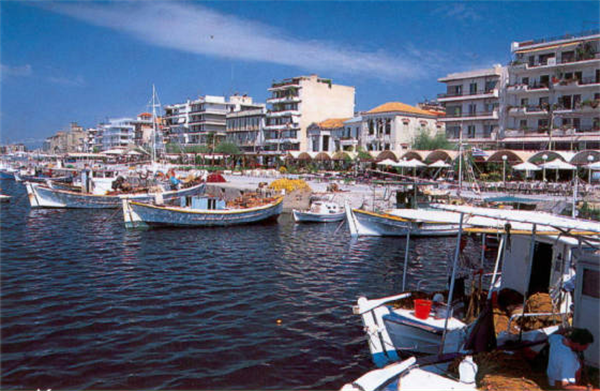- CURRENT LOCATION: HOME
- >> About Shaanxi
- >> Global Associations
- >> Sister Cities
- >>
- Xi'an
Kalamata (Greece)
2017-04-17 11:13:29 , Source : The Government Website of Shaanxi Province
Kalamata is the second most populous city of the Peloponnese peninsula, after Patras, in southern Greece and the largest city of the homonymous administrative region. The capital and chief port of the Messenia regional unit, it lies along the Nedon River at the head of the Messenian Gulf.
The 2011 census recorded 69,849 inhabitants for the wider Kalamata Municipality, of which 62,409 in the municipal unit of Kalamata proper. Kalamata is renowned as the land of the Kalamatianos dance and Kalamata olives.
Administration
The municipality Kalamata was formed at the 2011 local government reform by the merger of the following 4 former municipalities that became municipal units: Arfara, Aris, Kalamata, Thouria
The municipality has an area of 440.313 km2, the municipal unit 253.279 km2.
History
The history of Kalamata begins with Homer, who mentions Pharai, an ancient city built more or less where the Kalamata Castle stands today. It was believed that during ancient times the area that the city presently occupies was covered by the sea, but the proto-Greek and archaic period remains (Poseidon temple) that were unearthed at Akovitika region prove the opposite.
Climate
Kalamata has a Mediterranean Climate (Csa) with mild, wet winters and dry, hot summers. Kalamata receives plenty of precipitation days in winter. Summers are very hot and dry. The maximum temperature ever recorded at Kalamata is 45.6 °C and the minimum ever recorded is -5 °C.
Sights
There are numerous historical and cultural sights in Kalamata, such as the Villehardouin castle, the Ypapanti Byzantine church, the Kalograion monastery with its silk-weaving workshop where the Kalamata scarves are made, and the municipal railway park. The Church of the Holy Apostles is where Mavromichalis declared the revolt against Ottoman rule in 1821. Art collections are housed at the Municipal Gallery, the Archaeological Museum of Messenia and the Folk Art Museum.
Church of the Ypapanti
Kalamata’s cathedral of the Ypapanti (Presentation of the Lord to the Temple) nestles beneath the 14th-century Frankish castle. The foundation stone was laid on January 25, 1860, and the building was consecrated on August 19, 1873. It suffered great damage during the 1986 earthquake, but was subsequently restored. The Festival of the Ypapanti (27 January through 9 February) is of national importance for the Greek Orthodox Church and, locally, the occasion for a holiday (2 February), when the litany of what is believed to be a miraculous icon, first introduced in 1889, takes place.
In late January 2010 the city hosted the Ecumenical Patriarch Bartholomew to celebrate the 150th anniversary of the cathedral. He was offered the golden key of the city. The region around Kalamata has provided two Ecumenical patriarchs in the past.

Government Organizations



Other Links

Copyright@www.shaanxi.gov.cn All Rights Reserved
Registration Number:陕ICP备10004160号
